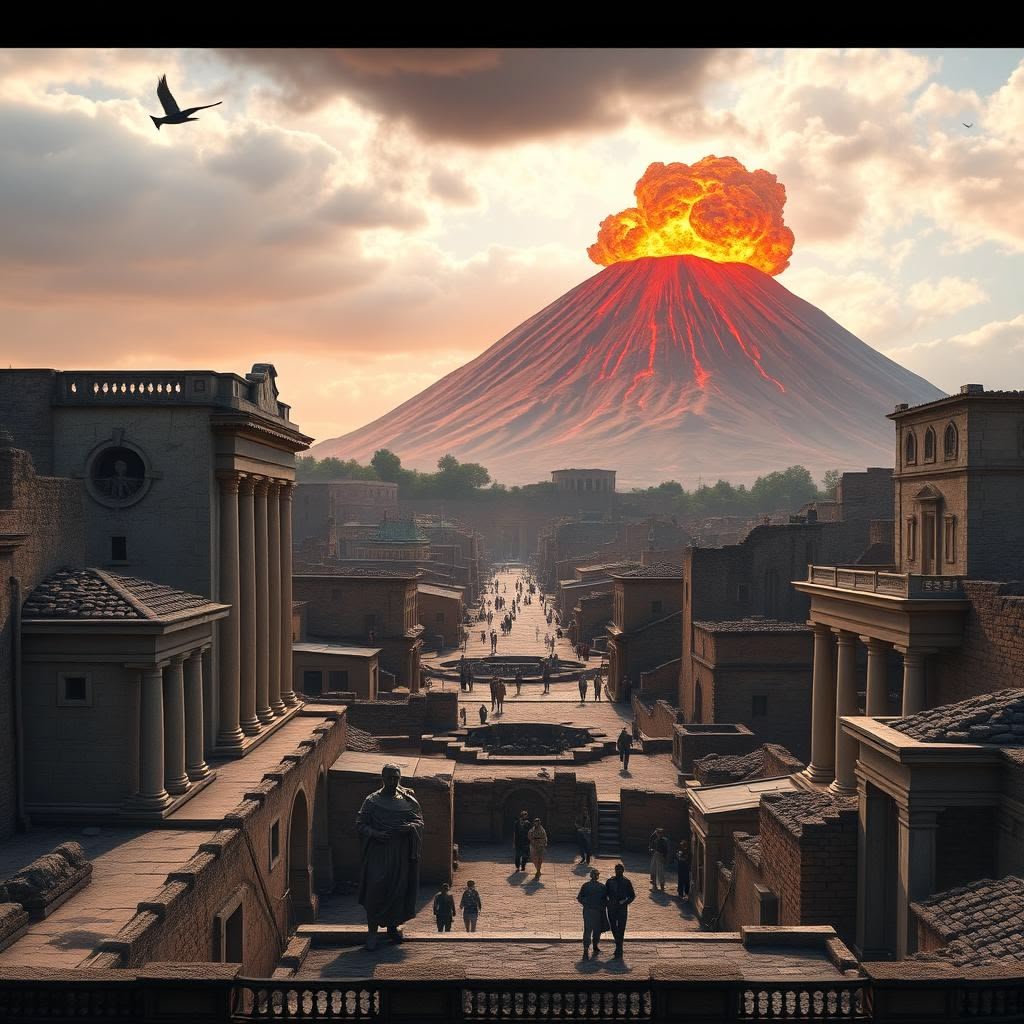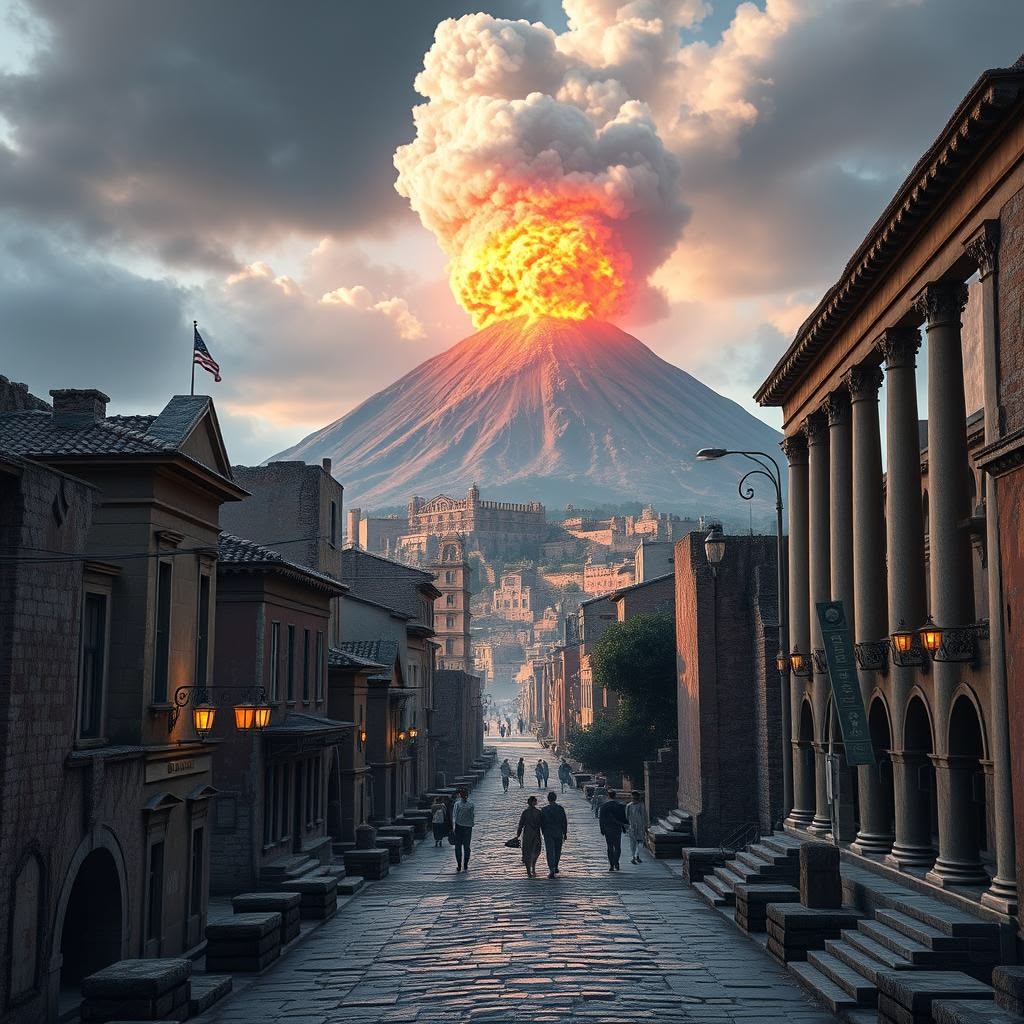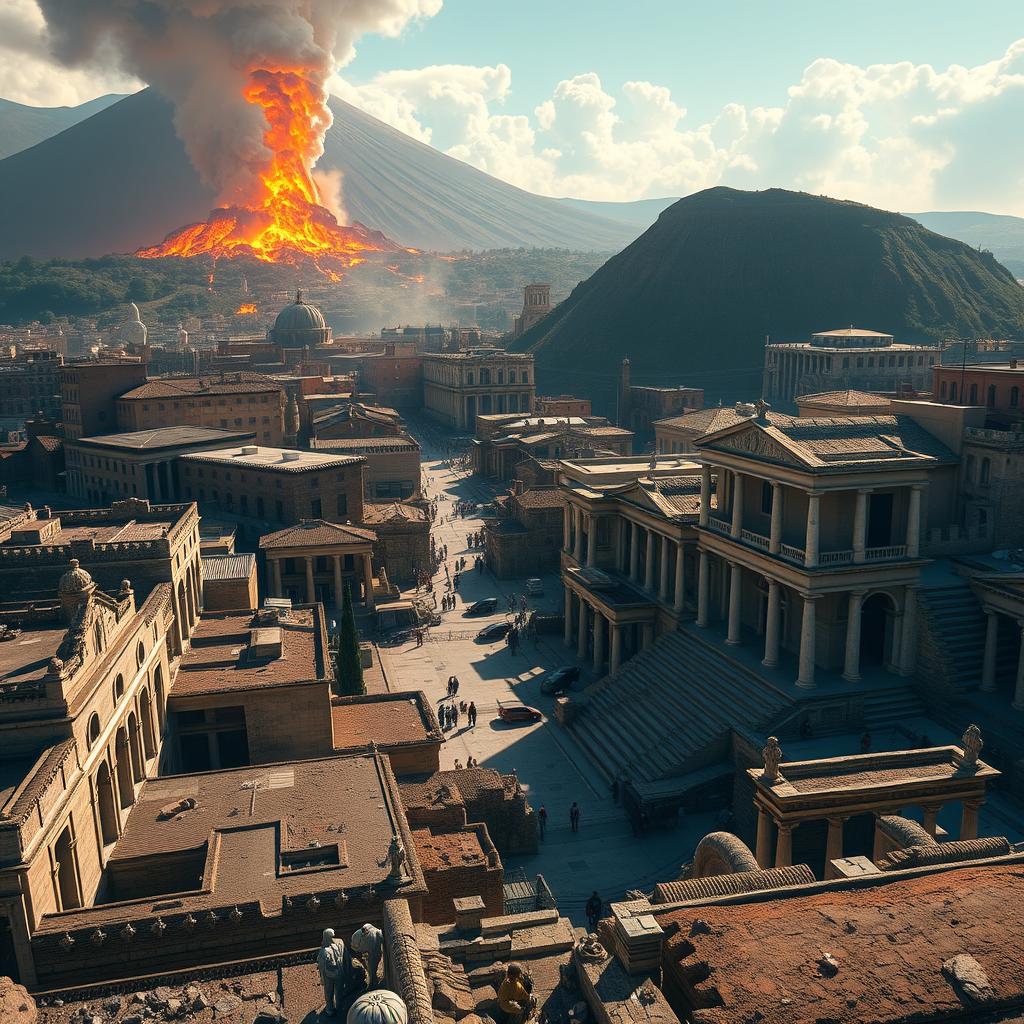The eruption of Mount Vesuvius in 79 AD had a profound impact on Pompeii’s urban landscape, forever altering the city’s future. This catastrophic event buried Pompeii under layers of volcanic ash, pumice, and pyroclastic material, freezing it in time and offering unparalleled insights into Roman urban life. The significance of this eruption extends beyond mere destruction; it shaped the evolution of Pompeii from a vibrant center into an archaeological site of cultural importance.
The event also serves as a stark reminder of the power dynamics during the Roman Republic, a period marked by a significant transition in governance from monarchy to a complex political structure. This system laid the foundation for modern democracies and established key principles of governance that resonate today.
Moreover, the aftermath of the eruption provides a unique lens through which we can explore the broader historical context of Rome, including influential figures like Scipio Africanus who played crucial roles in shaping Roman history. His victory over Hannibal during the Second Punic War not only changed the course of that war but also established Rome’s dominance over Carthage, with far-reaching consequences for the Mediterranean region.
The eruption and its consequences also coincide with a pivotal era in Roman history – the rise and fall of the Roman Empire. Spanning over a millennium, this ancient civilization has left an indelible mark on the world, shaping politics, culture, and society in ways that continue to resonate today.
Furthermore, it’s essential to understand the legal status of women in ancient Rome, as their rights and restrictions significantly influenced gender dynamics during this period. The intricate legal framework surrounding Roman women reveals how their citizenship was intrinsically linked to their relationships with men.
Finally, the enduring influence of Roman law is evident in its Corpus Juris Civilis, which not only preserved ancient Roman legal principles but also adapted them to meet contemporary societal needs. Its creation marked a crucial turning point in the development of legal systems, especially in Europe.

The Burial and Preservation of Pompeii
The burial of Pompeii under layers of volcanic ash from the Vesuvius eruption in 79 AD played a crucial role in preserving the city for centuries to come. Here are some key points to consider:
1. Description of the burial process by volcanic ash
- The eruption of Mount Vesuvius resulted in the rapid burial of Pompeii under up to 9 feet (3 meters) of volcanic ash, pumice, and debris.
- This sudden event effectively encapsulated the city, freezing it in time and offering a unique glimpse into Roman urban life as detailed in this historical overview.
2. Preservation of Pompeii’s structures and artifacts
- The volcanic ash acted as a protective shield, safeguarding buildings, frescoes, mosaics, and everyday objects from decay and weathering.
- The preservation of organic materials such as wooden beams and foodstuffs provided invaluable insights into daily life in ancient Pompeii.
3. Insights gained from the preserved city
- Archaeologists and historians have been able to reconstruct aspects of Pompeii’s urban layout, social structure, economic activities, and cultural practices.
- The detailed preservation of structures like houses, temples, baths, and theaters has deepened our understanding of Roman architecture and engineering techniques.
By examining the burial process by volcanic ash, the remarkable preservation of Pompeii’s structures and artifacts, and the insights gained from this ancient city, we can appreciate the unique historical value that the Vesuvius eruption bestowed upon Pompeii.
Furthermore, this event is not just an isolated incident but part of a larger narrative that includes significant milestones like the Twelve Tables, which shaped Roman legal systems. The legacy of Ancient Rome continues to influence various aspects of modern society, demonstrating how it has shaped Western civilization.
For those interested in exploring these themes further or immersing themselves in the fascinating world of Ancient Rome through platforms like Second Life’s Romanum role-playing game, Men of Pompeii serves as an ultimate online resource dedicated to bringing this ancient past to life.

Destruction, Infrastructure Changes, and Population Impact
The eruption of Mount Vesuvius caused widespread destruction in Pompeii, particularly to its infrastructure. The bustling streets filled with merchants and citizens were quickly buried under meters of volcanic ash and debris. Both simple homes and grand public buildings suffered extensive damage:
- Roofs collapsed under the weight of ash and stones.
- Walls cracked or crumbled due to seismic shocks and thermal stress.
- Aqueducts and water systems were clogged or broken, disrupting essential services.
- Roadways became impassable, isolating parts of the city.
This sudden destruction brought daily life to a standstill. Public places like forums, theaters, and bathhouses ceased to operate. The infrastructure that supported Pompeii’s lively urban culture was effectively buried beneath volcanic material.
Impact on the Population
The effects on the people were devastating. Many residents died during the initial stages of the eruption:
- Falling pumice and rocks crushed individuals who were outdoors or inside buildings.
- Toxic gases released during pyroclastic flows caused rapid suffocation.
- Thermal shock from hot ash suffocated or burned those trapped in narrow streets or enclosed spaces.
Excavations have uncovered casts of victims frozen in their last moments—some seeking shelter in homes, others fleeing along streets. Estimates suggest thousands perished instantly or within hours, leaving behind a city devoid of its inhabitants.
The combination of physical destruction and human loss forever changed Pompeii’s urban landscape. What remained was a ghost city buried beneath layers of volcanic deposits—a silent reminder of how fragile urban life can be in the face of natural disasters.
Influence on Later Transformations
This destruction set the stage for later changes visible in the post-eruption history of Pompeii’s land and its usage.
Despite this devastation, the spectacle of ancient Rome with its gladiators, chariot races, and theaters continued to fascinate even after the eruption. These events weren’t just entertainment; they played a significant role in shaping social relationships and political authority.
Moreover, during this period, philosophical schools like Stoicism began to rise in popularity. Founded by Zeno of Citium around 300 BCE in ancient Greece, Stoicism emphasized living in harmony with nature using reason and practicing virtue as paths to achieving human flourishing.
Additionally, the Roman army, known for its military might which shaped an empire, played a crucial role during these times. Its structure and operational effectiveness were key in achieving victories across large areas.
As for the infrastructure that once supported Pompeii’s vibrant urban culture, it included Roman roads which were vital for maintaining and expanding the empire. However, this infrastructure was devastated by the eruption.
Finally, understanding the lives of plebeians – Rome’s common people – is essential for grasping the social dynamics of Rome during this period.

Civita Hill: From Eruptive Material to Cultivated Grounds
The eruption of Mount Vesuvius in 79 AD not only buried Pompeii under layers of volcanic ash and debris but also dramatically changed the landscape of Civita Hill within the city.
The Impact of Eruptive Material on Civita Hill
- The covering of Civita Hill by eruptive material created a thick layer over the area, transforming it into an uninhabited site.
- Over time, Civita Hill evolved into grounds used for cultivation and burial purposes, serving as a stark reminder of the catastrophic event that reshaped Pompeii’s urban fabric.
The transformation of Civita Hill from a bustling residential area to a deserted expanse reflects the enduring impact of the Vesuvius eruption on Pompeii’s urban landscape. This event is part of a larger narrative that includes significant aspects of Roman law, which has played a crucial role in shaping modern legal systems, and Roman mythology, which has influenced modern culture.
Moreover, the societal structure during this period, including the role of gladiators] who were both admired and victimized in Roman entertainment, adds another layer to our understanding of this historical context. Finally, the transition from monarchy to a republican political system around 509 BCE marks a pivotal moment in history that continues to influence modern political structures.

Post-Eruption Transformations: Structures, Excavations, and Cultural Rediscovery
After the catastrophic eruption of Mount Vesuvius in 79 AD, Pompeii underwent significant transformations in its urban landscape. The aftermath of the disaster led to a series of changes in the city’s structures, excavations, and cultural rediscovery, shaping its historical significance for centuries to come.
Examples of Buildings Repurposed Post-Eruption
- Thermal Baths: Several thermal bath complexes within Pompeii were repurposed for different uses post-eruption. Some were converted into residential spaces or workshops, showcasing the adaptability of structures in the face of tragedy.
- Public Buildings: Temples and public buildings that survived the eruption underwent repurposing to serve new functions within the community. For instance, a temple might have been transformed into a meeting place or storage facility to meet evolving needs.
Conversion of Structures Into Bakeries and Other Establishments
- Bakeries: The ruins of Pompeii reveal evidence of bakeries that emerged after the eruption. These establishments played a crucial role in providing sustenance to the remaining population and contributed to the city’s gradual recovery.
- Workshops: Former residential spaces or workshops were transformed into bakeries or other commercial enterprises, highlighting the resilience and resourcefulness of Pompeii’s inhabitants in rebuilding their lives.
Emergence of New Constructions Over Time
- Residential Dwellings: As Pompeii started to recover from the devastation, new residential structures began to appear amidst the ruins. These constructions reflected a blend of traditional Roman architecture with innovative design elements tailored to post-disaster requirements.
- Commercial Spaces: Alongside residential buildings, Pompeii saw the emergence of new commercial establishments such as markets, taverns, and artisan workshops. These structures not only catered to daily needs but also fostered economic activity in a recovering city.
The role of agriculture during this period was crucial as it served as a driver for economic growth and recovery.
Historical Significance of Archaeological Interest Post-Eruption
- Cultural Preservation: The archaeological interest sparked by Pompeii’s ruins post-eruption led to the meticulous preservation of structures and artifacts. This ongoing excavation and conservation efforts have provided invaluable insights into ancient Roman civilization and urban planning.
- Educational Value: The cultural rediscovery of Pompeii serves as a rich educational resource for scholars, historians, and visitors alike. By studying the city’s post-eruption transformations, researchers can delve deeper into the societal impact of natural disasters on urban environments.
Unearthing Buried Structures Beyond Original City Limits
- Expansion of Discoveries: Excavations around Pompeii have extended beyond its original boundaries, revealing buried structures and artifacts that offer new perspectives on Roman life. These findings underscore the vast archaeological potential surrounding the ancient city and its broader impact on historical research.
The post-eruption era marked a pivotal period in Pompeii’s history characterized by adaptive reuse of existing buildings, creation of new structures, heightened archaeological exploration, and cultural rediscovery. Additionally, understanding daily life in ancient Rome during this time provides further insight into how different social classes adapted to these changes.
Moreover, exploring ancient Roman religion during this period unveils additional layers of understanding regarding cultural practices and beliefs that influenced these transformations.
Conclusion
Looking back at how Pompeii changed from a busy city to an important archaeological site gives us valuable lessons about city planning and cultural shifts.
The disastrous eruption of Vesuvius in 79 AD sealed Pompeii’s fate, burying it under layers of ash and debris and preserving it in time.
The city’s transformation from a lively Roman hub, known for its amazing engineering achievements, to an archaeological treasure trove highlights the lasting impact of natural disasters on human civilization.
Through ongoing excavations and research, the legacy of Pompeii continues to provide invaluable insights into ancient urban life and cultural practices, including the lifestyle of the patricians, who were the wealthy and powerful elite of ancient Rome.
The eruption of Vesuvius undeniably changed Pompeii’s urban landscape forever, shaping its story from past glory to present-day historical significance.

